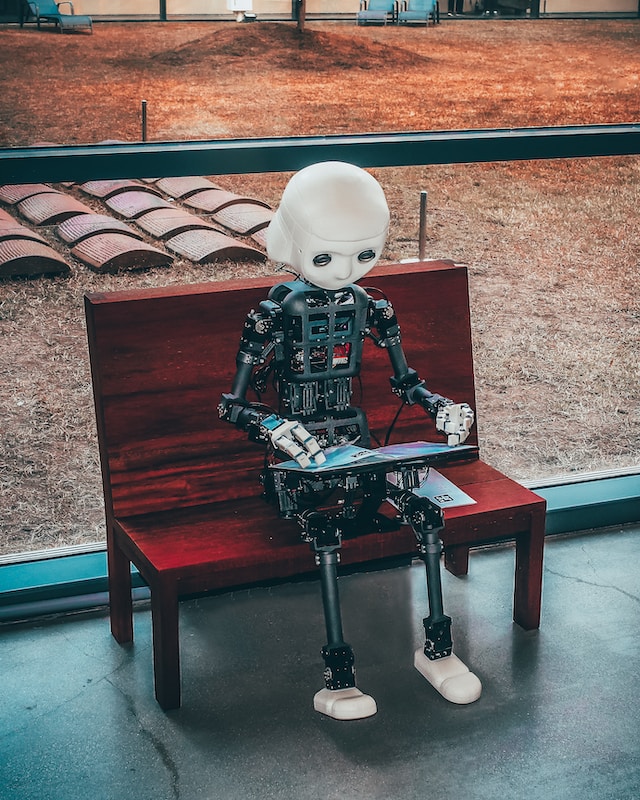
Welcome to the realm of AI-enhanced prosthetics, where cutting-edge technology meets human potential. In this blog, we present futuristic concepts that redefine assistive technologies, enabling individuals with physical challenges to achieve new heights. From revolutionizing mobility to restoring tactile sensations, these advancements are paving the way for a brighter and more inclusive future.
Understanding AI-Enhanced Prosthetics
AI-enhanced prosthetics represent a groundbreaking fusion of artificial intelligence and biomechatronics. By mimicking natural human movements and responding to neural signals, these devices provide a seamless integration of technology with the human body. With AI algorithms, prosthetics can adapt in real-time to the user’s actions and environment, making them more intuitive and user-friendly.
The Rise of Brain-Computer Interfaces (BCIs)
One of the most remarkable developments in AI-enhanced prosthetics is the advent of Brain-Computer Interfaces (BCIs). BCIs enable direct communication between the brain and external devices, allowing amputees to control their prosthetics with their thoughts. This technology has unlocked new possibilities, giving individuals a sense of agency over their prosthetic limbs and bridging the gap between humans and machines.
Prosthetics with Sensory Feedback
AI has brought us closer to replicating the sense of touch in prosthetics. Advanced sensors and haptic feedback systems can detect pressure, temperature, and texture, providing users with a lifelike sensory experience. With this groundbreaking innovation, users can feel sensations in their prosthetic limbs, making day-to-day tasks more natural and intuitive.
Bionic Eyes: A Vision of the Future
AI-enhanced prosthetics go beyond limbs. Bionic eyes, powered by AI algorithms, offer hope to the visually impaired. These cutting-edge devices translate visual information into electrical signals that the brain can interpret. With AI’s ability to process vast amounts of data, bionic eyes are becoming more sophisticated, improving visual acuity and enhancing the quality of life for many.
Advancements in Neuroprosthetics
Neuroprosthetics, integrated with AI, have the potential to restore lost cognitive functions. For individuals with neurological disorders, such as paralysis, AI-powered neuroprosthetics can bridge the neural gap, allowing them to regain control of their bodies. As AI continues to evolve, so will the capabilities of neuroprosthetics, opening new horizons for medical science.
Empowering Mobility with Exoskeletons
Exoskeletons, equipped with AI-driven algorithms, offer a new level of mobility for those with mobility impairments. These wearable devices augment a user’s strength, enabling them to walk, run, or even climb stairs with ease. As AI advancements continue, exoskeletons are becoming lighter, more energy-efficient, and seamlessly integrated with human movements.
The Future of AI-Enhanced Prosthetics
The future of AI-enhanced prosthetics is exciting and full of promise. As technology advances and research expands, we can expect even more groundbreaking innovations. Some possibilities include self-learning prosthetics that adapt to individual preferences, prosthetics capable of experiencing emotions, and enhanced interfaces for brain-machine communication.
Ethical Considerations and Challenges
As AI-enhanced prosthetics become more prevalent, it is essential to address ethical concerns. Questions regarding data privacy, AI biases, and equitable access to these technologies arise. Striking a balance between innovation and ethical considerations will shape the responsible development and use of these life-changing technologies.
Empowering Lives and Redefining Abilities
The impact of AI-enhanced prosthetics extends far beyond restoring physical abilities. These technologies have the power to transform lives, enabling individuals to pursue their dreams and ambitions unhindered by their physical limitations. By fostering a sense of empowerment, AI-enhanced prosthetics foster inclusivity and diversity in society.
Final Words
In conclusion, AI-enhanced prosthetics represent an awe-inspiring leap in the world of assistive technologies. With futuristic concepts like brain-computer interfaces, sensory feedback, and bionic eyes, these innovations are not just restoring abilities but empowering a new generation to thrive. As we continue on this journey of innovation, let us strive to embrace ethical considerations, ensuring that these technologies benefit humanity as a whole. The future looks promising, and with AI at the forefront, there is no limit to what we can achieve in enhancing the lives of individuals with physical challenges.
Commonly Asked Questions
Q1: How do AI-enhanced prosthetics work?
AI-enhanced prosthetics use advanced sensors and AI algorithms to interpret neural signals and respond with lifelike movements, providing intuitive control to the user.
Q2: Are AI-enhanced prosthetics affordable?
While the cost of AI-enhanced prosthetics is a concern, ongoing research and development aim to make these technologies more accessible and affordable in the future.
Q3: Can AI-enhanced prosthetics be customized for individual needs?
Yes, AI allows for customization and personalization of prosthetics, tailoring them to the unique needs and preferences of each user.
Q4: Are there any risks associated with brain-computer interfaces in prosthetics?
BCIs are a cutting-edge technology, and like any medical advancement, they come with potential risks. However, researchers are continually working to mitigate these risks and ensure user safety.
Q5: How will AI-enhanced prosthetics shape the future of assistive technologies?
AI-enhanced prosthetics will drive the future of assistive technologies by pushing boundaries, enhancing functionality, and redefining what is possible for individuals with physical challenges.












